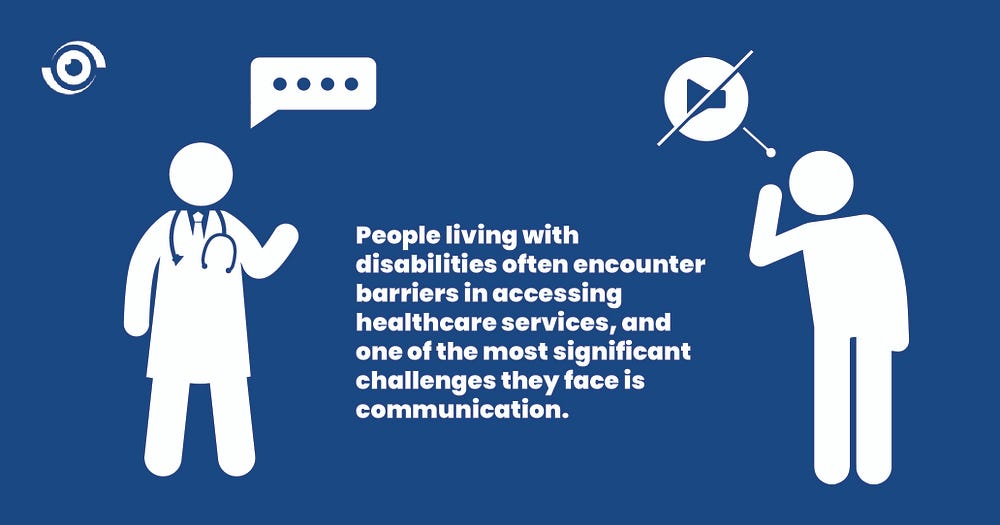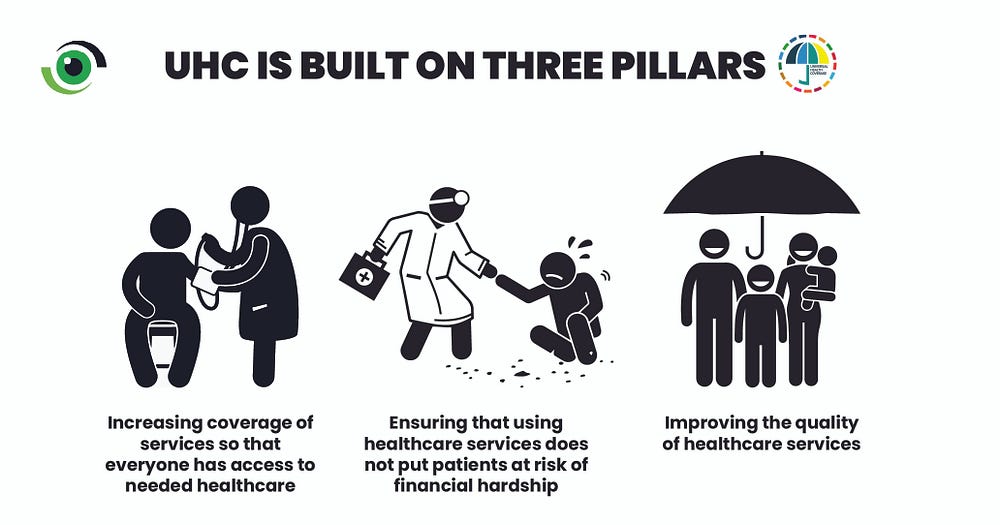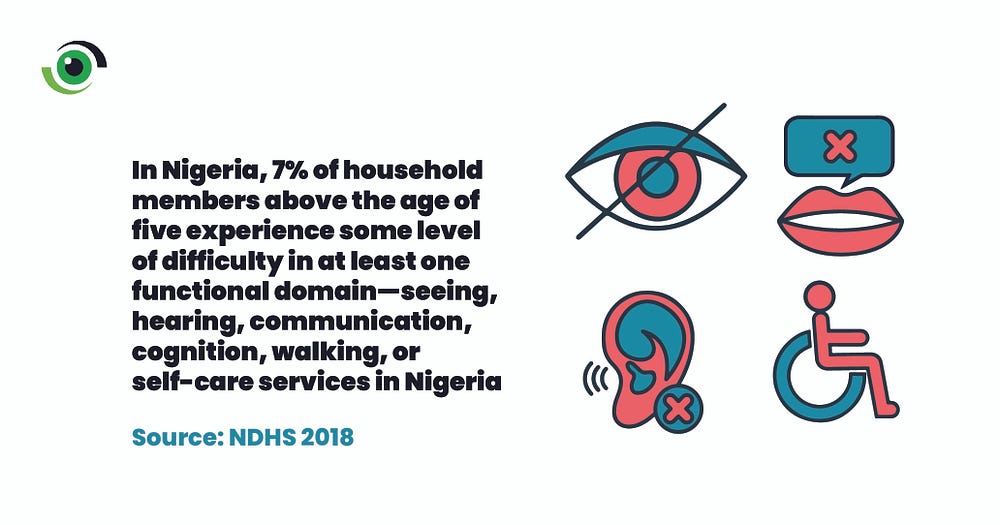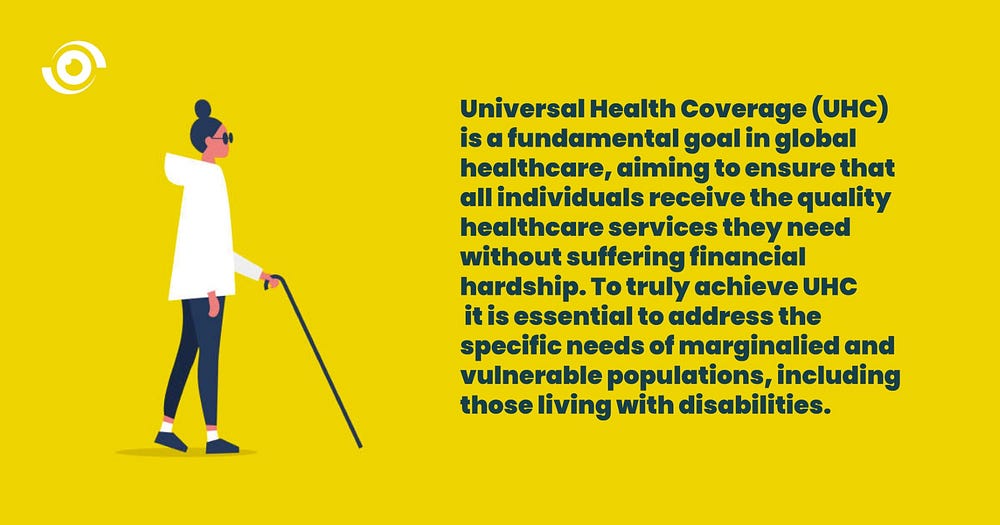[ad_1]
By Sonia Biose and Sunday Oko (lead Writers)
Editor’s note: Developing a disability-inclusive healthcare system in Nigeria is critical to achieving Universal Health Coverage (UHC). In this Thought Leadership piece, Sonia Biose and Sunday Oko discuss the barriers persons with disabilities face when accessing healthcare services and how training healthcare workers on inclusive communication can help bridge some of these gaps.
At the Health Financing Policy Dialogue hosted by Nigeria Health Watch in April 2023, Hellen Beyioku-Alase, Executive Director, Deaf Women Aloud Initiative, shared her experience accessing healthcare services in Nigeria.
“Each time I go to the hospital, I encounter communication difficulties because neither the doctors nor the nurses are proficient in sign language, and there’s no interpreter available. This situation often leaves me feeling frustrated because while they are speaking, I cannot understand them, and when I’m trying to communicate, they cannot comprehend. It becomes a challenging situation as they are using a spoken language I can’t hear while I am expressing myself through sign language that they do not understand.”

Persons with disabilities often experience multiple barriers when accessing health services, including communication, physical and financial barriers. In addition to their healthcare needs, additional services related to their impairment should be provided. This is in line with one of the three pillars on which Universal Health Coverage (UHC) is built- increasing coverage of services so that everyone has access to necessary healthcare. The key word in this fundamental goal is everyone.

This means that, in order to fully attain UHC, it is critical to address the special needs of marginalised and vulnerable populations, including those living with disabilities. Individuals who are deaf and hard of hearing, as well as those who are blind or otherwise visually impaired, fall under this category. Similar to Beyioku-Alase, these groups of individuals face unique communication challenges within healthcare settings, which limits the services they can access.
The challenge
In Nigeria, 7% of all household members over the age of five experience some level of difficulty in at least one functional domain — seeing, hearing, communication, cognition, walking, or self-care. Furthermore, 1% of household members under the age of 40 have significant difficulties or are unable to operate at all in at least one of these domains.

Meanwhile, 9.5 million Nigerians are deaf or hard-of-hearing and they may communicate using sign language or lip-reading. At the same time, those who are blind or visually impaired may depend on Braille, assistive technology, or human support for communication. Unfortunately, these resources are often not available in health facilities, making accessing quality healthcare harder and perpetuating health inequality.
At the recently concluded 78th session of the United Nations General Assembly (UNGA), heads of states, representatives of states and government expressed concern about the inequalities faced by people with disabilities, including those caused by a lack of knowledge, negative attitudes and discriminatory practices within the health workforce. Discrimination by healthcare providers and other patients further exacerbates the difficulties that people with disabilities face when accessing healthcare.
Effective communication as a pillar of quality care
Effective communication between healthcare professionals and their patients is critical to providing high-quality healthcare. This communication is vital because it enables patients to fully understand their diagnoses, treatment options, and aftercare instructions. For individuals who are deaf or hard of hearing, or blind, effective communication becomes even more critical.
Misdiagnoses, inadequate treatment, and overall patient dissatisfaction may result from failing to satisfy these distinct communication needs in healthcare settings. Healthcare facilities should endeavour to provide services that meet the needs of patients who are hard of hearing or deaf, including meeting their communication needs. This would require providing healthcare workers with training and support, in addition to the resources to provide optimal care.
This entails skills in alternative communication methods, such as written communication, speech-to-text technologies, and video relay services, as well as sign language and understanding the complexities of being deaf. Healthcare providers that can effectively engage with deaf patients not only demonstrate respect for their patients’ particular needs, but also contribute to an improved patient experience.
It is also critical to provide resources such as braille and personal aids for patients who are blind or visually impaired in health facilities. This is in line with the UNGA’78 political declaration of the High-level Meeting on UHC, which recognises the need for all people to have access to quality healthcare including assistive technologies and specialised services. This would require partnerships with organisations such as the Clinton Health Access Initiative (CHAI) who have partnered with the LEGO Foundation to strengthen systems to integrate assistive technology into healthcare facilities
The Solution
To achieve UHC by 2030, health policies and programmes must take into account the needs of people living with disabilities through a more disability-inclusive health system. In addition to addressing communication needs, this would include addressing physical access barriers to healthcare facilities, such as providing ramps and other infrastructure that accommodates individuals with mobility challenges.

According to the recommendations from the Nigeria Health Watch, Health Financing Policy Dialogue, the government of Nigeria should invest in comprehensive training of healthcare professionals in order for them to communicate effectively and understand the needs of vulnerable people, including those who are deaf or hard of hearing and blind or visually impaired. This is driven by the overarching goal of improving inclusion, accessibility, and equitable healthcare delivery to ensure that no one is left behind.
[ad_2]
Source link



